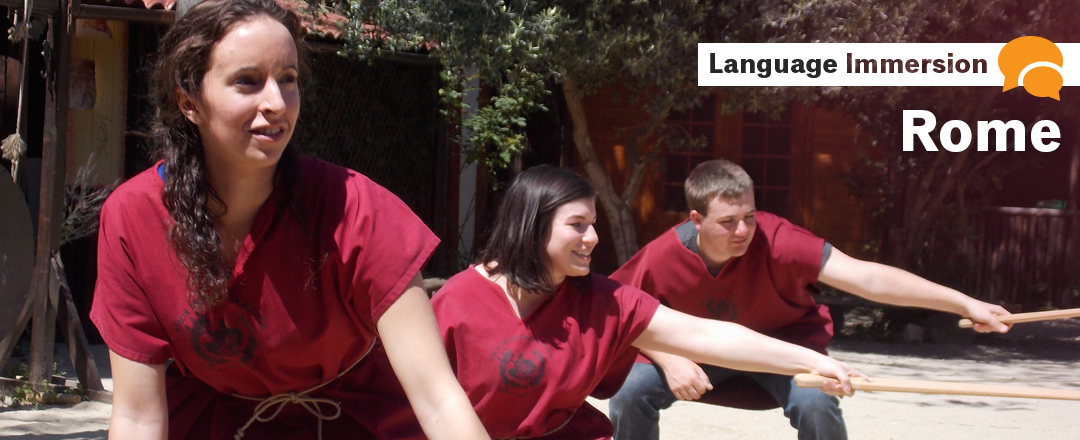Accelerate your students’ Italian with an unforgettable trip to the Eternal City! This 9-day tour is an incredible opportunity for your students to walk through the city’s biggest sites, all while they become more fluent and confident in Italian.
As part of our language immersion collection, this tour features a daily three-hour language course, with each class focusing on a different topic, like art or food. After your morning class, your students will apply their vocabulary with activities related to that topic.
It’s the perfect combination of fun, adventure and learning, and it’s never been easier to plan than with Explorica. Read on to learn more about Language Immersion: Rome.
Language Immersion: Rome (9-11 days)
Welcome to Rome! Get your bearings before starting class. Your tour director will show you around some of Rome’s most popular sites, starting with the iconic Spanish Steps. Built in the 18th century, the 135-step stairway connects the Spanish embassy to the Holy See below. If you recognize it, that may be because Audrey Hepburn popularized the site for American audiences in the 1953 film Roman Holiday.
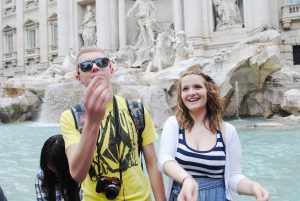
Then, take your spare change to the Trevi Fountain, one of the most famous fountains in the world. Also built in the 18th century, the massive fountain is a popular site for making a wish — an estimated $1.5 million was thrown in the fountain in 2016. Throw a coin with your right hand over your left shoulder.
If you wished to see one of the world’s greatest feats of architecture, you’re in luck: Your next stop is the world-famous Pantheon. First a Roman temple and now a church, the Pantheon was built in 126 AD and is still the world’s biggest concrete dome. View the massive columns and pediment before heading inside to take a look at the dome. Don’t forget to look up — the dome has hole in the center for sunlight.
Just west of the Pantheon, you’ll head to the site of the 1st-century stadium Domitian, now a massive plaza. Take a moment to admire the tall obelisk and the 17th-century Fountain of the Four Rivers in the center.
History: Focus on history vocabulary on your first day of class, and then head to the city center to see the Colosseum, one of the world’s premier tourist attractions. The largest amphitheater ever built, it’s estimated that the Colosseum could once hold between 50,000 and 80,000 people, but it was designed so that it could be emptied in mere minutes. Once it was completed in AD 80, it was used for public spectacles, like gladiator fights and executions. It later fell into disrepair, being used at various times as a cemetery, housing units, and a fortress.
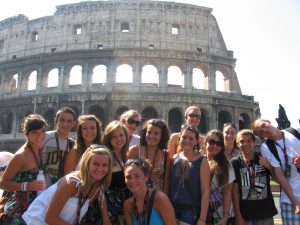
Walk through the Colosseum and check out the tiers of seating, representing different classes of ancient Roman society. Make sure to also look at the exposed underground, where animals and gladiators were kept before battle. Despite its violent past, the Colosseum is now used by Italy as a symbol of its anti-death penalty stance, and is occasionally lit up gold in response to death penalty-related world news.
The largest collection of Roman ruins stands nearby, at the Forum Romanum, or Roman Forum. Once a marshland, the Roman Forum was the site of countless shrines, temples, political buildings, and statues of ancient Rome. Walk through the crumbling masterpieces and imagine what it looked like as the political center of Rome almost 2,000 years ago.
Then, head to a modern plaza, the Piazza Venezia, where many roads intersect and locals gather. Take a walk through the massive square — you can’t miss Il Vittoriano, the monument to the first king of Italy. Throughout your journey through Rome’s rich history, your students will be encouraged to use their history vocabulary to converse with your guides and with the locals.
Food: Your second day of class focuses on Italian cuisine. Head to the Campo de’ Fiori Market and mingle with locals in the bustling, colorful outdoor marketplace, speaking Italian and purchasing local food along the way. Your next task is to learn the art of pizza making from an Italian chef, before getting to eat your creations yourselves.
Art: How do you say masterpiece in Italian? Your students will certainly know. They’ll converse using their art vocabulary throughout each activity, gaining knowledge and language confidence along the way.
Take a lesson in art vocabulary on your third day of class, and then take an adventure through Rome’s artistic treasures. Start at the Vatican Museums, a collection of artistic masterpieces founded in the 16th century. Featuring several Raphaels and one da Vinci, this spellbinding museum will keep you moving from room to room in awe.
Don’t forget to look up at the end, when you reach the Sistine Chapel. Painted by Michelangelo over a four-year period in the 16th century, the reluctant sculptor initially told Pope Julius II that he would rather not focus on painting. But the Pope wouldn’t budge, and Michelangelo painted the ceiling standing on a scaffolding with his head tilted back. Follow the stories of the Old Testament along the ceiling, which Michelangelo painted backwards, starting with the final story and ending with Creation, which was painted in just one day.
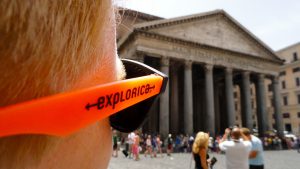
Exit the chapel directly to your next stop, the largest church in the world. St. Peter’s Basilica is well known as the burial site of Saint Peter. The sprawling church contains over 100 tombs, masterpieces of sculpture–including Michelangelo’s Pietà–and the world’s tallest dome, partially designed by Michelangelo himself.
Culture: The fourth day of class precedes an adventurous journey through Italy’s unique cultural heritage. You’re in for a real treat with a bike ride along the Appian way, a strategic Roman road connecting Rome with Brindisi of southern Italy.
After your bike ride, settle down to eat with a local family and share what you’ve done that day in Italian. Get a sense of the Italian lifestyle during your conversations.
Heritage: Your last day of class is an exciting look at vocabulary around Italy’s heritage. Then, you’ll learn to live and work like a gladiator at a gladiator school taught by local Romans. Pat yourselves on the back for a successful Italian course with a Roman-style dinner–served to you by gladiators and ancient Romans–and a musical show in Italian.
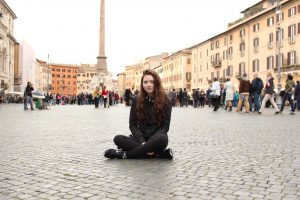
Top off your trip with an excursion to nearby Tivoli, known for its incredible Villa d’Este, a UNESCO World Heritage Site. Known for its proliferation of fountains, the estate once housed a Catholic cardinal after it was built in the 16th century. Walk through the estate to see the lavishly decorated rooms, the tiered Renaissance garden, and the spectacular fountains, all of which work by the force of gravity alone.
Head back to Rome and say Addio to Rome with a treasure hunt of the area. Use your Italian knowledge to scavenge for treasures around the city you’ve come to know and love.
Not ready to go home? Take an optional extension to Sorrento for a visit to Pompeii and the Blue Grotto, or head home to show off your language skills. View the full itinerary for Language Immersion: Rome, and contact us to start planning.

